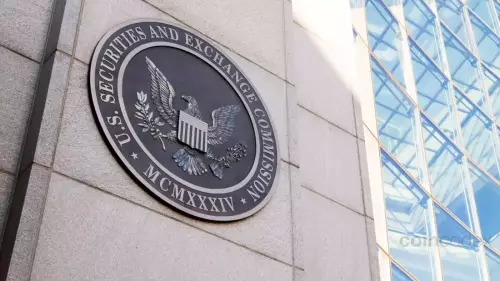 |
|
 |
|
 |
|
 |
|
 |
|
 |
|
 |
|
 |
|
 |
|
 |
|
 |
|
 |
|
 |
|
 |
|
 |
|

Author: Botanix Labs
Original link: https://botanixlabs.xyz/en/blog/the-current-occurrence-landscape-of-bitcoin-scaling
In the process of developing Botanix, we kept asking ourselves a question: Can a system built on top of Bitcoin really be called a sidechain or layer 2 (L2)? This is a complex question because from a technical point of view, based on current capabilities, Bitcoin cannot act as a true L1 to host L2 like other ecosystems. Typically, L2 relies on smart contracts deployed at the bottom layer to verify proofs. For example, in the Ethereum ecosystem, L2 verification is performed by a deterministic function in a smart contract, which is executed by all Ethereum nodes when processing transactions.
The situation with Bitcoin is both simpler and more complex. Discussions about L2 on Bitcoin are often confusing. Unlike Ethereum, which natively supports Turing completeness and expressiveness, Bitcoin's current capabilities are extremely limited, and there are subtle differences in what is technically possible and what is not. Because of this, systems built on Bitcoin do not actually have strict L2 or sidechain capabilities. So why do we prefer to call them "Bitcoin Chains" instead of extensions or L2? The reason is that these chains built on Bitcoin usually have independent operating logic and build their own ecosystems around it.
Bitcoin does not support smart contracts like Ethereum does. Any complex logic must be implemented through structures built on top of it. Therefore, Bitcoin itself cannot directly verify proofs or maintain the state of smart contracts. Most types of proofs are too large to be put on the chain - Bitcoin transactions are only allowed to carry 80 bytes of arbitrary data. Solutions like Starkware's m31 are highly specialized and closed. Even if you manage to publish some kind of proof or state update to Bitcoin, the process is more like optimistic rollups. But waiting a whole week for fraud proofs to be resolved is neither realistic nor acceptable, and relying on third-party bridges introduces delays and trust assumptions, both of which are not ideal in the Bitcoin native environment.
Interactions with Bitcoin are limited to unspent transaction outputs (UTXO) with ScriptPubKey and BTC transfer transactions. The OP_RETURN instruction can only carry 80 bytes of data and cannot support interactions with complex data structures at all. Because of these limitations, it is difficult for Bitcoin to have complete L1 support for L2 functionality unless there are major changes to the protocol (such as a hard fork). Such modifications not only require extremely high community consensus, but may also undermine the uniqueness and value positioning of Bitcoin as an asset. For example, proposals to introduce new instructions such as OP_CAT (such as CatVM) have not yet reached a broad consensus. Even if there is a consensus, it often takes several years for a BIP (Bitcoin Improvement Proposal) to be proposed and activated.
Because of this, Botanix aims to build on “current Bitcoin” rather than trying to force it to L1 or push radical protocol changes. This path is possible because we use Spiderchain technology and a network of coordinators. So, how far has the ecosystem being built on top of Bitcoin developed?
Background: The emerging landscape of Bitcoin Chain (L2)
Despite the above limitations, most projects still prefer to call themselves "L2" and use this term as a general label. One of the earliest projects to claim to be Bitcoin L2 is Stacks. Although Stacks anchors data to Bitcoin and interacts with BTC, it is essentially an independent blockchain with its own consensus mechanism. Another example is BounceBit, which is classified as Bitcoin L2 because it uses BTC in its consensus mechanism (along with the native token). But this is actually not accurate. From an architectural point of view, it is closer to a restaking model, running on its own chain, and Bitcoin's role is limited to indirect participation.
However, the vision of making Bitcoin "alive" - making it not just a value storage tool, but an asset that can "do more" - has long attracted the attention of many developers. With the new super cycle starting in 2022, this vision has become increasingly important. While Ethereum has risen about 4 times from bottom to top in this cycle, Bitcoin has risen 6 times despite being slower and more "clunky". This dynamic is very interesting, isn't it? It further strengthens Bitcoin's position as the dominant asset in the Web3 world.
From the perspective of value utilization indicators such as TVL (total value locked) - which indirectly reflects the degree of use of the underlying assets in the ecosystem - Bitcoin's comparison with other networks is even more significant. TVL represents the value carrying capacity of an ecosystem, including both the applications built on its upper layer and the utilization of the underlying assets in the L2 running on the base chain.
Currently, Bitcoin’s TVL in decentralized applications is only $5.5 billion, while its FDV (fully
Disclaimer:info@kdj.com
The information provided is not trading advice. kdj.com does not assume any responsibility for any investments made based on the information provided in this article. Cryptocurrencies are highly volatile and it is highly recommended that you invest with caution after thorough research!
If you believe that the content used on this website infringes your copyright, please contact us immediately (info@kdj.com) and we will delete it promptly.






























































